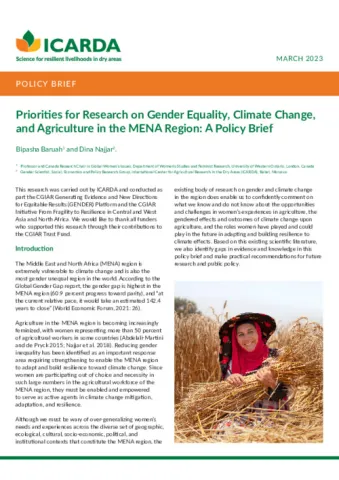Priorities for Research on Gender Equality, Climate Change, and Agriculture in the MENA Region: A Policy Brief

Abstract
The Middle East and North Africa (MENA) region is 
extremely vulnerable to climate change and is also the 
most gender unequal region in the world. According to the 
Global Gender Gap report, the gender gap is highest in the 
MENA region (60.9 percent progress toward parity), and “at 
the current relative pace, it would take an estimated 142.4 
years to close” (World Economic Forum, 2021: 26).
Agriculture in the MENA region is becoming increasingly 
feminized, with women representing more than 50 percent 
of agricultural workers in some countries (Abdelali-Martini 
and de Pryck 2015; Najjar et al. 2018). Reducing gender 
inequality has been identified as an important response 
area requiring strengthening to enable the MENA region 
to adapt and build resilience toward climate change. Since 
women are participating out of choice and necessity in 
such large numbers in the agricultural workforce of the 
MENA region, they must be enabled and empowered 
to serve as active agents in climate change mitigation, 
adaptation, and resilience
